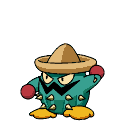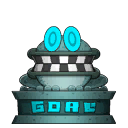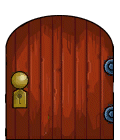Wario Land: Shake It!
| Wario Land: Shake It! |
|---|
|
Also known as: Wario Land Shake (JP), Wario Land: The Shake Dimension (EU)
|
To do:
|
Wario returns to his 2D platforming roots, seven years after Wario Land 4! The game features fully animated cinematics, beautifully painted scenery, and the power to shake baddies senseless.
Contents
Sub-Pages
| Prerelease Info |
| Notes |
| Unused Enemies We can only assume these baddies were beaten so senseless by Wario they couldn't recover in time to appear in-game. Be warned, this page contains a lot of animated GIFs! |
| Unused Object Graphics This game contains a lot of beautifully painted and manually animated objects that were simply tossed out. Expect a lot of images. |
| English Translation Differences Sigh. Yep. This again. |
Graphics Compiler Files
Included with a number of graphics files are plain text files with XML code. These files were likely used to compile the final file packages for the game, and refer to locations on the developer's computer. They all follow this general structure:
There are quite a lot of them, so they will be listed on the Notes page. Don't expect anything too exciting, though.
Unused Graphics
Map & Menu
![]()
A placeholder image with "金ハリ" ("Golden Needle") written on it.
![]()
![]()
![]()
![]()
These four icons were likely intended for an early map. They are considerably less detailed than the ones featured in the final game. Note that they are normally white and transparent, but have been put on black for the sake of visibility. They are found in the objects folder as env_map_00, with a duplicate as emv_map_00. The icons are named Icon_Treasure00, Icon_Pean, Icon_Melful, and Icon_Treasure01, respectively.
![]()
![]()
![]()
![]()
![]()
![]()
These were likely icons for now scrapped missions. The Bloomsday boss never received a challenge icon, however the icon is very similar to the one used in the file select screen. One icon features a log floating in the water. There is also no "bronze challenge" featured in the game either.
Early World Map Piece
The globe model used in the main menu (with Wario wiggling his butt) contains part of an earlier version of the world map. The mesh, while hidden beneath the main model, is located where Jiggle Jungle is in the final version. According to the name of the texture, this was meant to be Area 1.
Unused Backgrounds
Wreck Train
There are two unused backgrounds in the files for Wreck Train, section_22 and section_23. Section 22 is an early version of the final's engine room, while section 23 is a rather square engine room. Section 23 also features a pair of square windows, which are never seen in any of the engine rooms in Wreck Train or Derailed Express, though they appear in some of the unused backgrounds for the latter. Unusual among rooms, section 23 also has a set of black spots in the four corners to mark the border of the room.
Glittertown
Glittertown has a set of three unused backgrounds that all have something in common: extra blue shading along the top. They are labeled as section_20, section_21, and section_22. Section 20, while resembling the normal stage background, has shadows that indicate it is meant for a very specific room layout. It also contains piles of chips, which is a feature never seen in any of the backgrounds of Glittertown or Neon City. Sections 21 and 22 follow the common setup for rooms where the city is visible in the background, except the pillars that mark the entrances lack the texturing used in the final. Note that all of these backgrounds still contain text, which was removed from (almost) all of the backgrounds in the final. Copies of these files exist in the directory for Neon City as well.
Derailed Express
Included with the files for Derailed Express are two unused backgrounds, section_21 and section_22. Section 21 is a relatively small room that uses the design of the Derailed Express's engine interior. Meanwhile, section 22 is an earlier version of the engine, with the interior and chimney exit being part of the same exact room. And, while the background itself is not unused, the background for the first engine room has extra details behind the foreground and beyond the player's view. Specifically, windows in the upper left- and right-hand corners. Note that the left side of the background is a lot like section 21.
Glittertown Background
| To do: Find out if this is used in the Japanese version. |
This early version of Glittertown's casino background, found in the first slot machine room, has English (well, Engrish) text on various parts of the board that was removed from the rest of the backgrounds in the levels. This one was likely missed due to the room being so small, so that none of the text shows up. The text does show up, however, in the hidden money room at the end of Neon City.
Unused Stages
Pirate Shop
When selecting the Pirate Shop from the map screen, the player is taken directly to the shop. Files for a pre-shop stage do exist, however, in the location where these files would normally be stored for the second stage of the first world. It was likely removed for adding unnecessary delay for simply buying an item or two. Also, take note, the railing featured to the left is a separate layer from the building structure.
The door to the shop, complete with animation, goes unused for the same reason. The above level layout is the background for it, note the darkened doorway which is just the right shape for the unused door object.
Found along with the graphics for the shop door, this sign would have been placed above the door space. Both of these objects can be found in the file shopgate_00, with duplicates in syrupshop_00. The difference between these two files is that shopgate has both objects in a single model, while syrupshop has them separate.
Duplicate Shakedown Schooners
The sixth area, the Shakedown Schooner, has files for two stages, despite only having one location to choose from. The stage labeled stage_01 is the one used in the game, while stage_00 appears to be an earlier version of the ship's deck. The art for the two versions are practically identical, although the graphics are shifted over a bit between versions. The main difference is that the unused version has the entire ship's width, while the used version cuts off past the doorway. The textures for the unused version have half of the ship, which is then mirrored by the models. Another copy of this early duplicate exists as level_01 in stage_01, and again as section_20 of level_00 of stage_01.
Alternate Shake King Battle Stage
There are two versions of the Shake King battle room included in the files. The one in section_21 has a very different basement setup, with an industrial crane and piles of treasure instead of robots and machinery. Note that the image above is only the background, which has six layers. One very important difference is that this implies the first battle previously had three phases, or that all three phases were meant to be in the same map, whereas the final version only has two before switching to a new map.
Build Date
| To do: Other versions |
| Version | Text |
|---|---|
| Japan | May 15 2008 13:33:54 |
| Korea | Sep 17 2008 11:12:00 |
There is a build date in the dol. Interestingly, the Korean version was built 2 years, 7 months and 28 days before it was released (on April 14, 2011). It was also manufactured around the same time, as according to the manufacturing code printed onto the disc, the print run (or one of the print runs) was started on October 9, 2008.
Regional Differences
Wii Home Menu Channel & Save Data Banners
To do:
|
Like most other Wii games released at the time, the region's appropriate logo is used for the game's Wii Home Screen Channel Banner. This also applies to the game's Save Data Banner.
Title Screens
Only minor differences exist amongst the various releases of Wario Land: Shake It!. Outside each using its native/popular language, the most major difference include the North American release's "Shake It!" and the European release's "The Shake Dimension." There are also a few minor graphical differences between the NA and EU releases, with the NA release having a bolder outline and the "Wario Land" lettering much closer together. The Korean release adds extra copyright info below.
| Japan | US |
|---|---|

|

|
| Europe | Korea |

|

|
Demo Movies
As the power gauge's icon was changed between regions, all 12 Gameplay Demo Movies that play after waiting on the Title Screen for too long are also different between the Japanese and International versions.
Caged Merfle's Exclamations
Absent in the North American and European releases, the word "Help!" appears in speech bubbles that pop up around the Merfle cage in the Japanese and Korean releases. The letters remain part of the model and animate as they had in the Japanese and Korean versions. However, the alpha channels were removed, rendering them invisible.
As seen below, the normal speech bubbles were replaced with jagged ones to accompany the banging sound from inside the cage.
| Japan/Korea | North America/Europe |
|---|---|
  |
  |
Gauge
| To do: images can be found here. |
When Wario's power gauge is full, "! SHAKE !" appears in the Japanese version, whereas the international versions uses Wario's "W" emblem.
Loading Screen
| Japan | North America/Korea | Europe |
|---|---|---|
The Japanese version has the text "Now Loading" with interpunct character next to it. This was changed to ellipsis character for the international versions. The European version changed the text to "Loading".
Miscellaneous
- At some point, the order of the bosses was shuffled a bit. Large Fry, the fifth boss, is labeled as the third boss in the files.
- The internal name for the Mini-Barrel, which let Wario shrink, is "Gulliver Tunnel". This is in reference to Gulliver's Travels, a story famous for the character Gulliver, who was either gigantic or dwarfed by his surroundings depending on the lands he would visit.
- According to the names of some of the audio streams in the /sound/ folder, the game was in development as far back as 10/31/2006.
- Almost all enemies in the game are recolored using palettes, with the colors of the most common form as the default. The default colors for Flipsting (the scorpion), however, are a mix of two: blue highlights and orange shading.
Early Level Order
The file that contains the names of all stages has some interesting differences. While the main levels are the same, the hidden levels were shuffled around a bit. For most areas, the first and second secret levels were swapped. The main difference is that Launchpad Labyrinth was meant to be part of Area 1, hence reusing the level theme from Stonecarving City. For those who are curious, the full list can be found on the Notes page.
The Wario series
| |
|---|---|
| Wario Land | |
| Game Boy (Color) | Wario Land: Super Mario Land 3 • Wario Land II • Wario Land 3 |
| Game Boy Advance | Wario Land 4 |
| Wii | Wario Land: Shake It! |
| WarioWare | |
| Game Boy Advance | WarioWare, Inc.: Mega Microgame$! (Demo) • WarioWare: Twisted! |
| GameCube | WarioWare, Inc.: Mega Party Game$! |
| Nintendo DS | WarioWare: Touched! (Demo) • WarioWare: D.I.Y. |
| Nintendo DSi | Paper Plane (iQue Prototypes) • Pyoro |
| Wii | WarioWare: Smooth Moves • WarioWare: D.I.Y. Showcase |
| Wii U | Game & Wario |
| Nintendo 3DS | WarioWare Gold |
| Nintendo Switch | WarioWare: Get It Together! • WarioWare: Move It! |
| Other | |
| NES | Wario's Woods |
| SNES | Mario & Wario • Wario's Woods |
| Game Boy (Color) | Wario Blast: Featuring Bomberman! |
| GameCube | Wario World |
| Nintendo DS | Wario: Master of Disguise |
- Pages missing developer references
- Games developed by Good-Feel
- Pages missing publisher references
- Games published by Nintendo
- Wii games
- Pages missing date references
- Games released in 2008
- Games released in July
- Games released on July 24
- Games released in September
- Games released on September 22
- Games released on September 26
- Games released on September 27
- Games with unused areas
- Games with unused code
- Games with hidden development-related text
- Games with unused enemies
- Games with unused graphics
- Games with regional differences
- To do
- Wario series
Cleanup > Pages missing date references
Cleanup > Pages missing developer references
Cleanup > Pages missing publisher references
Cleanup > To do
Games > Games by content > Games with hidden development-related text
Games > Games by content > Games with regional differences
Games > Games by content > Games with unused areas
Games > Games by content > Games with unused code
Games > Games by content > Games with unused enemies
Games > Games by content > Games with unused graphics
Games > Games by developer > Games developed by Good-Feel
Games > Games by platform > Wii games
Games > Games by publisher > Games published by Nintendo
Games > Games by release date > Games released in 2008
Games > Games by release date > Games released in July
Games > Games by release date > Games released in July > Games released on July 24
Games > Games by release date > Games released in September
Games > Games by release date > Games released in September > Games released on September 22
Games > Games by release date > Games released in September > Games released on September 26
Games > Games by release date > Games released in September > Games released on September 27
Games > Games by series > Wario series
















